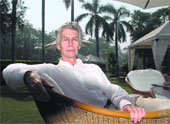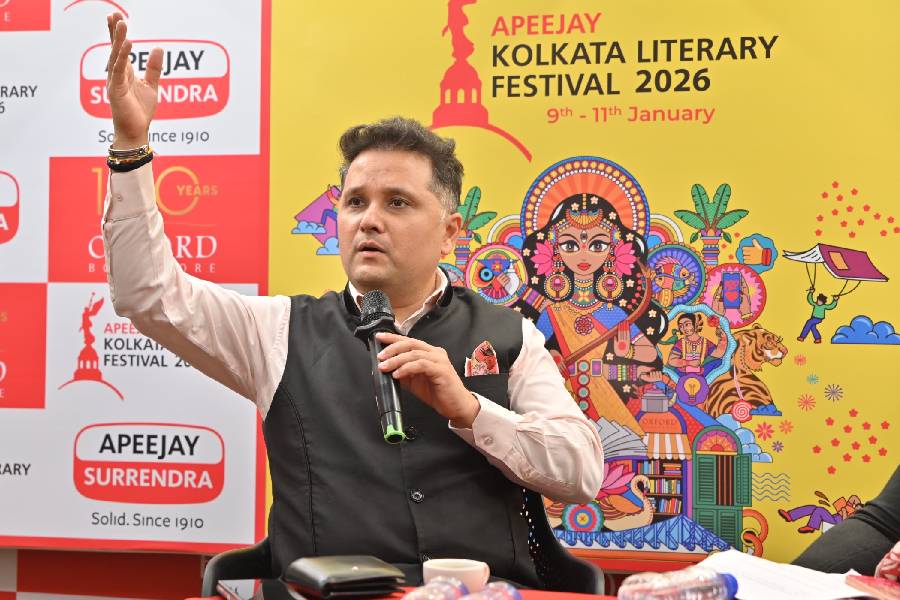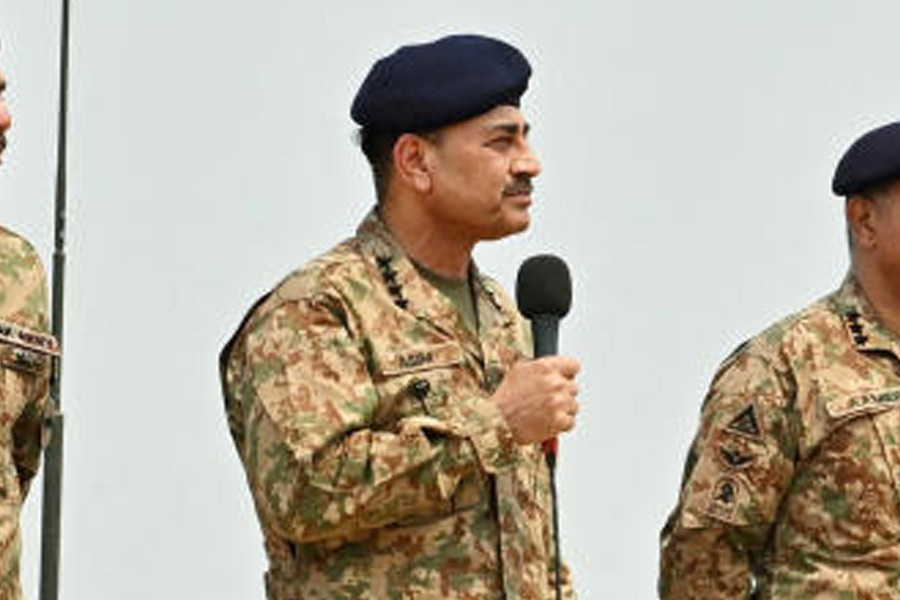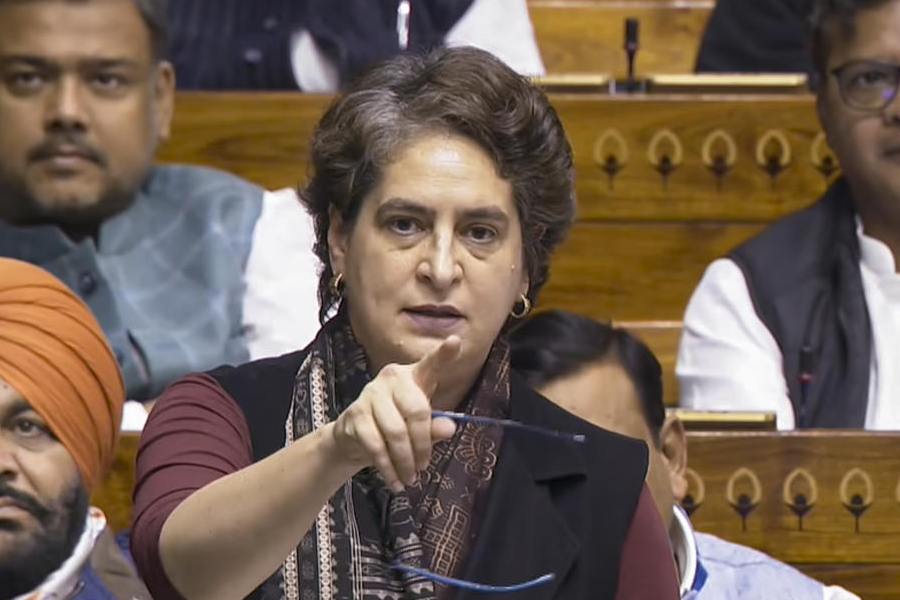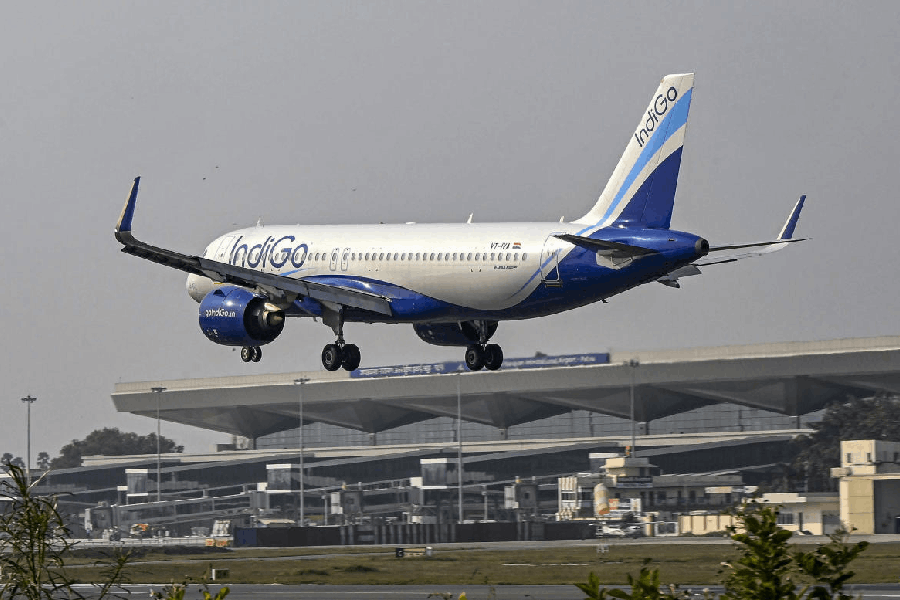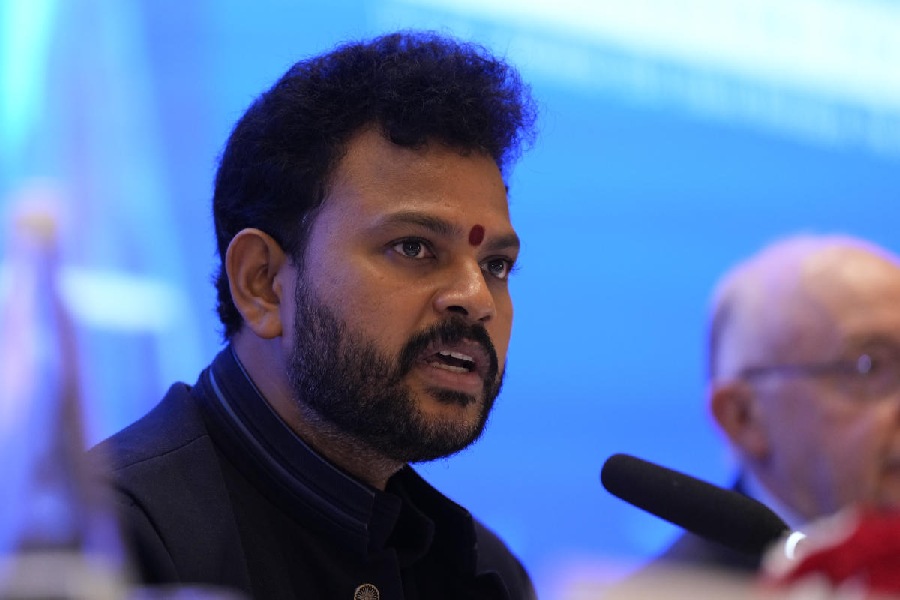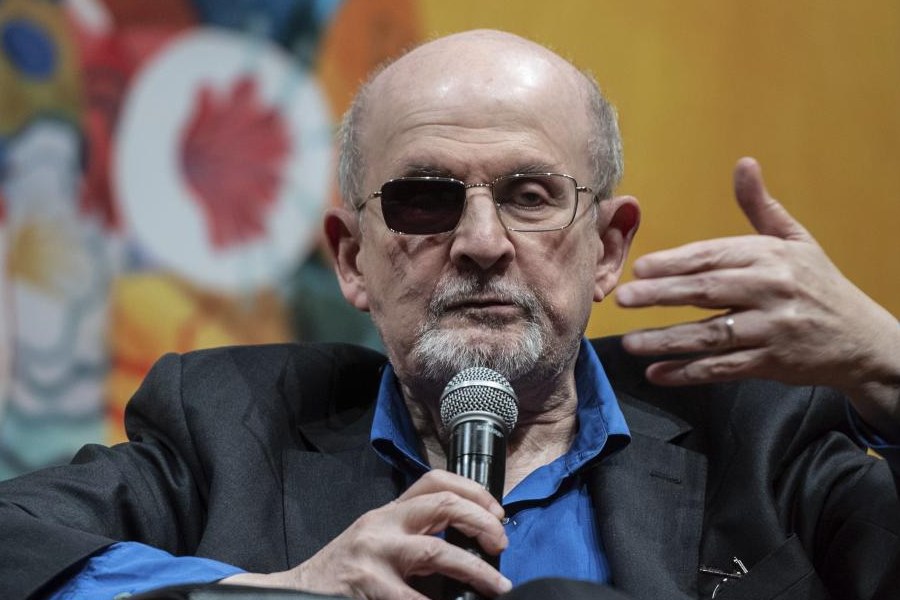 |
He has eaten off a banana leaf in the home of eminent Carnatic singer, M. S. Subbulakshmi, and has enjoyed the hospitality of the Nizam of Hyderabad. Lady Diana, “a beautiful person” struck a pose for him, as did a semi-nude, saxophone-clutching David Bowie.
For one who’s constantly brushing shoulders with royals and famous personalities, has an insider’s view of royal estates and gardens and clicks some of the most beautiful homes in the world, Derry Moore, the 12th Earl of Drogheda, is a very modest man. The title sits lightly on the septuagenarian photographer, and he refuses to be known by it. “Hereditary titles are all a part of history now,” he says firmly. Then he adds with a smile, his lined face lighting up, “Perhaps it is also vanity. I don’t want to be thought of as just another titled English photographer.”
Moore has, over the years, built an impressive body of work that includes countless reels taken in India. Though, his most famous shots include rare pictures of the world’s upper crust, including the late Princess of Wales and her sons, he feels some of his best works have been in India. He fell in love with the country when he landed here for the first time in 1976. Says the globetrotting shutterbug, “It was in India that I discovered my vision as a photographer.”
And if the Queen Mother, Queen Elizabeth, Princess Diana, Ronald Reagan and David Bowie, posed for him, so did India’s Indira Gandhi, J.R.D. Tata, V. S. Naipaul, J. Krishnamurti, Subbulakshmi and Satyajit Ray. This week, some of these photos were on display at The Olive Bar & Kitchen in Delhi. Says Moore, “Since most of my favourite photographs are those captured in India, I felt that it was time I exhibited my work in Delhi.”
Besides shooting in India, Moore has worked extensively in the US. He recalls being mistaken for Nancy Reagan’s hair stylist rather than the person commissioned to shoot her portrait along with her husband, then the US president. Moore’s byline has also appeared regularly in magazines like Architectural Digest, Town and Country and Vogue. Besides that, his pictures have also appeared in books like The Dream Come True ? Great Houses of Los Angeles, The Englishman’s Room, The Stately Homes of Britain and Evening Ragas, A Photographer in India.
His pictures of Buckingham Palace are on the royal family’s official website and The National Portrait Gallery, London, acquired 14 of his portraits in 1993. A tribute is in the offing next year when Rizzoli, a New York-based publishing house, brings out a retrospective of his interiors photographs.
But for now, Moore intends to enjoy his India sojourn that will last till the end of this month. He has visited India regularly for the last 30 years and has taken pictures all round the country. But he recalls being blown away by Hyderabad’s Falaknuma Palace which he shot in 1976. “Although it hadn’t been lived in since 1911, there were sheets on the bed,” he recalls. Murshidabad Palace too was extraordinary and miraculously untouched by photographers. Looking back he says that he was touched by Subbulakshmi’s simplicity, Indira Gandhi’s grace and Krishnamurti’s courtesy.
While he works in both colour and black and white, he’s more drawn to the latter. He explains, “Black and white photographs have depth and you can look at them repeatedly without getting bored as they have an abstract quality about them.”
Though Moore has achieved great acclaim, he never planned to be a photographer. He even briefly studied art at the School of Seeing in Salzburg set up by Austrian artist, Oscar Kokoschka. But Moore quickly decided he didn’t have the talent to be a painter and gave it up without a second thought.
Then came years of doing “various things in the realm of the arts, photography and cinema”. He even worked in the Christie’s furniture shop. But he found his true calling much later in 1970, after he saw an exhibition by famed British photographer, Bill Brandt. Moore convinced the ace lensman to take him on as a sort of apprentice.
Soon afterwards, he emerged in his new avatar as a professional photographer in 1971. The turning point came after a chance meeting with Paige Rense of Architectural Digest in 1973. He became a regular contributor and never looked back.
But money was never a driving force. Moore is from an Anglo-Irish family, which moved from England to Ireland in the 16th century. The title Earl of Drogheda came to his family in 1660 and their home was Moore Abbey, a large Gothic-style mansion. Moore’s grandfather sold it to the nuns of The Sisters of Charity of Jesus and Mary in 1945. Moore is unsentimental about the family home, “I’m glad my grandfather sold Moore Abbey. Had I inherited it, I would’ve become an alcoholic and done nothing with my life.”
When his father died in 1990, Moore was already well known as a photographer. Once he inherited the title he did make occasional appearances in the House of Lords but only made his first speech in 1996. He prefaced the speech (on helping the British film industry) with an apology: “Although it has taken me some time to summon up courage to make my maiden speech, I promise your Lordships that I shall not make up for lost time.” When hereditary peerages were abolished he wrote an article in The Guardian about the last sitting. He has shot pictures in the House which appeared in the book, Inside the House of Lords.
Moore will be undertaking a limited number of photographic commissions when he returns to India early next year. “The first time I stepped on Indian soil, it was like stepping into my own past,” he reminiscences. His connection with the country is complete, and he intends to make the best of this homecoming.
Photograph of Derry Moore by Jagan Negi

